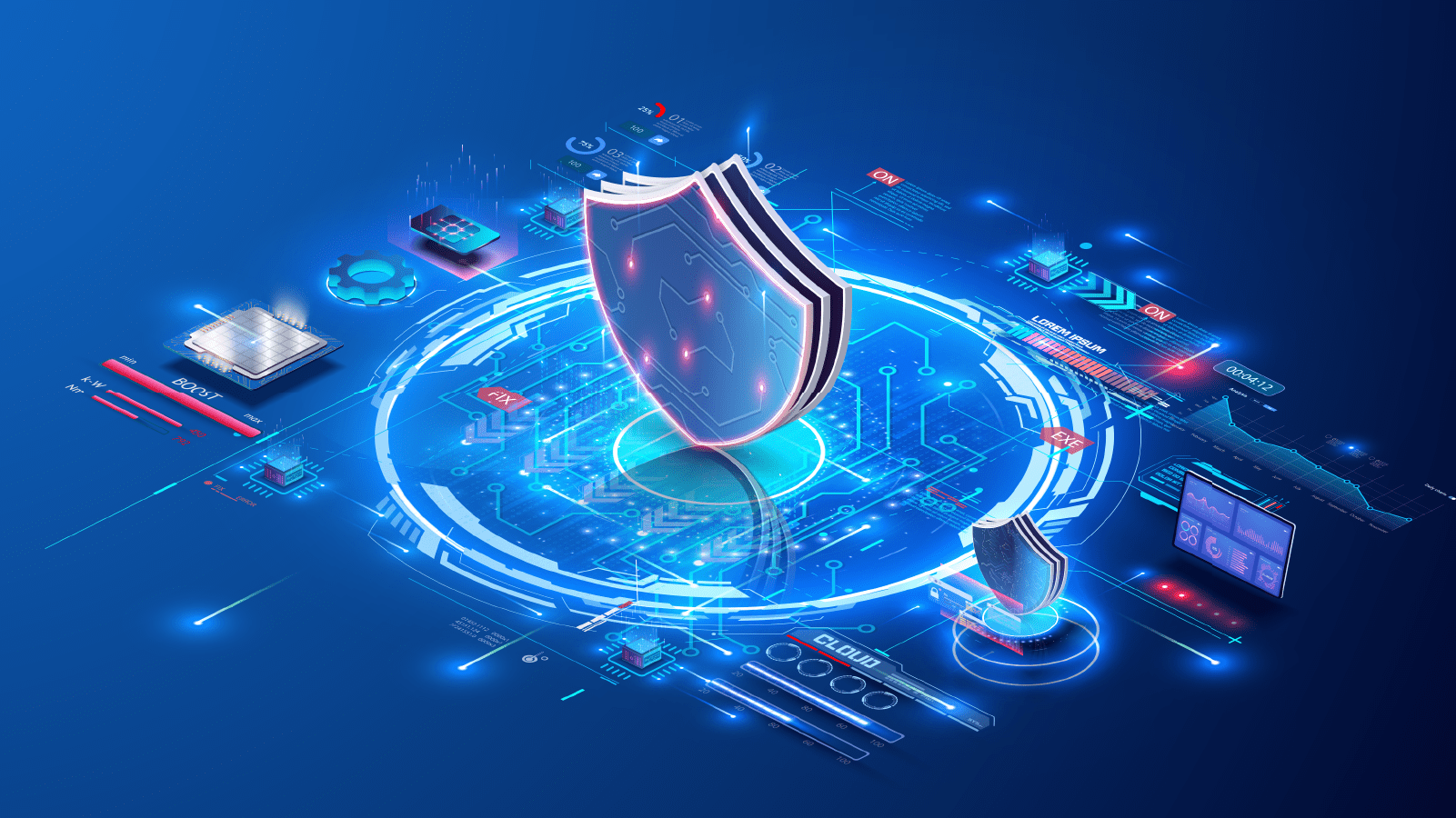Digitalization, data analytics, and IoT devices are rapidly transforming manufacturing, ushering in Industry 4.0. This fourth industrial revolution is characterized by a transformative shift in industrial operations driven by big data, cloud computing, artificial intelligence (AI), and automation. This shift necessitates robust security frameworks like IEC 62443 to safeguard against evolving threats.
Industry 4.0 isn’t just about deploying new technologies; it’s about how they work together. The Industrial Internet of Things (IIoT) has revolutionized how these technologies connect. By enabling seamless communication and data exchange between devices, IIoT creates a vast, interconnected web. This web supercharges efficiency and decision-making, but it also creates new vulnerabilities and magnifies the impact of outages and data breaches.
Securing these critical resources requires prioritizing ICS cybersecurity and developing robust strategies that work within this new operational environment. Unfortunately, many organizations are falling behind – only 25% have a clearly defined IoT security plan. This lack of preparedness leaves them dangerously exposed to cyberattacks.
This article will dive into the challenges of modern industrial advancements and provide practical solutions for securing these environments, focusing on strengthening ICS cybersecurity.
ICS cybersecurity challenges in Industry 4.0
Industry 4.0 integrates advanced technologies like AI, IoT, and robotics, creating increasingly complex system architectures. While this complexity enhances operational capabilities, it also introduces significant ICS cybersecurity challenges. These sophisticated, interconnected systems are interdependent, making it difficult to isolate and fix issues or upgrade individual components.
Further complicating matters, In operational technology (OT) deals with a variety of standard protocols, in contrast to IT which largely employs a single standardized communication protocol. This unique characteristic means each OT system presents its own set of security challenges.
Increased connectivity in Industry 4.0 environments creates a larger attack surface. Integrating devices and networks introduces numerous vulnerabilities, making cyberattacks more likely. Cloud and edge computing adoption expands this risk further by introducing data transmission vulnerabilities and potential unauthorized access points. Even remote operation capabilities, while boosting efficiency, present new security challenges that cyber attackers can exploit.
Vulnerabilities in modern ICS
Modern ICSs face distinct vulnerabilities, particularly as they adapt to the changing landscape of Industry 4.0. One major vulnerability is their increased exposure to Internet-based threats. When ICSs are connected to the Internet or any externally accessible IT networks, they become susceptible to a wide range of cyber-attacks, including targeted zero-day attacks and sophisticated phishing schemes. This connectivity also allows malware and ransomware a window to infiltrate and potentially disrupt crucial industrial operations.
Legacy and brownfield systems present another challenge for ICS cybersecurity efforts. These older systems often struggle to integrate smoothly with new, advanced technologies, creating functional inconsistencies and security gaps. Regularly updating these legacy systems is challenging or even impossible, leaving them vulnerable to documented threats. Unlike IT systems, legacy OT systems often lack compatibility with modern security features. The delicate nature of OT processes further complicates matters, as even routine IT security measures can disrupt operations.
The high cost of poor ICS cybersecurity
Inadequate ICS cybersecurity exposes industrial operations to a multitude of threats. Cyberattacks can wreak havoc, causing critical system shutdowns, extended downtime, and disruptions to manufacturing processes. These setbacks can cripple production schedules, delay deliveries, and inflict significant financial losses. Additionally, compromised ICS systems can erode customer trust and, more importantly, lead to safety hazards by causing critical safety systems to malfunction.
Responding to these cyber incidents often requires diverting resources to address urgent system and data restoration. Recovery processes are usually time-consuming, extending periods of impeded operations.
Strengthening ICS cybersecurity with foundational strategies and IEC 62443
Effective ICS cybersecurity goes beyond reacting to threats; it prioritizes proactive measures aligned with industry standards like IEC 62443. Traditional security approaches often take a reactive stance, managing security incidents after they’ve been detected. This reactive approach can lead to disruptions and data loss. In contrast, proactive ICS cybersecurity strategies focus on preventing incidents altogether, avoiding negative impacts and building a more robust defense.
IEC 62443 can help organizations achieve this transition, ensure compliance with best practices, and create a consistent and effective security posture.
Implementing core cybersecurity practices
Bolstering ICS cybersecurity requires implementing core security practices. These controls, ranging from pre-emptive assessments to operational changes, are essential for building a resilient and secure industrial environment. They ensure the integrity and continuity of critical operations.
Make a comprehensive risk assessment
The first step is building a strong foundation with a comprehensive risk assessment. This assessment proactively identifies potential vulnerabilities and prioritizes them for mitigation. Armed with this information, organizations can develop a targeted risk management strategy, which forms the foundation for further security measures.
Segment the network architecture
Securing the network is a critical step in fortifying ICS cybersecurity. Organizations can achieve this by dividing the network architecture into isolated zones with controlled access points. This segmentation strategy, combined with access restrictions, minimizes the potential for widespread system compromise during a security breach.
Trusted access managment
PKI provides a robust framework for certificate-based authentication within ICS. Controllers and devices are issued digital certificates that serve as unique identifiers, ensuring that only trusted entities can access and interact with the system.
Continuously monitor the system
Recognizing that perfect security is an illusion, continuous monitoring plays a vital role, enabling the detection of anomalies and potential security threats. Swift detection and response minimize the impact of incidents and potential downtime.
Perform regular audits and training
Rounding out a holistic ICS cybersecurity strategy requires robust auditing and training programs. Consistent auditing ensures systems remain up-to-date and aligned with best practices, safeguarding against evolving threats. Regular employee training cultivates a security-aware workforce, reducing the risk of human error and susceptibility to phishing attacks.
Leveraging IEC 62443 standards for robust security
Implementing IEC 62443 standards can bolster ICS cybersecurity and support a comprehensive risk-mitigation strategy that incorporates all major program areas.
Physical security focuses on two critical elements: hardware protection and access control.
- Hardware Protection: ensures that only authorized personnel can access vital equipment by securing physical access to critical ICS infrastructure components.
- Strict Access Control: regulates and monitors physical access to ICS equipment.
Network security forms the backbone of a robust ICS cybersecurity strategy.
- Secure Authentication: Implementing technologies like Public Key Infrastructure (PKI) provides a robust framework that ensures trusted communication between devices.
- Network Segmentation: Dividing the network into isolated zones restricts access and controls traffic flow within the system.
- Firewalls and Monitoring: Firewalls and continuous monitoring work together, safeguarding network perimeters and identifying suspicious activity within network segments.
- Encryption: Encryption, using certificates, secures data in transit and authenticates communication channels, ensuring data confidentiality and access control.
- Application Security: Patching, updating, and controls
Application security protects the software tools running ICS.
- Consistent Updates and Patching: Regularly updating software and applying patches promptly addresses vulnerabilities.
- Certificate Lifecycle Management: Issuing, renewing, and revoking digital certificates secures communication and ensures data integrity and confidentiality.
- User Access Controls and Privilege Management
Operational controls further tighten security:
- Granular Access Controls: Fine-tuned access controls limit access to authorized personnel only, safeguarding sensitive resources.
- Least Privilege: Assigning and monitoring user privileges carefully prevents unauthorized access and protects system integrity.
By implementing these measures, organizations can significantly reduce the risk of breaches and the impact of compromised credentials.
Aligning with IEC 62443
PKI is the cornerstone of robust ICS cybersecurity according to IEC 62443 standards. PKI plays a vital role throughout the security framework, providing a strong foundation by:
- Trusted Authentication: PKI secures communication between devices through robust authentication protocols.
- Securing Data Encryption: It safeguards data transmission through encryption techniques.
- Verifying Data Integrity: Digital signatures ensure the integrity and authenticity of data.
Automating PKI processes is essential for efficient security management in ICS environments. Automating tasks like certificate issuance, renewal, and revocation streamlines these complex processes, strengthening security and reducing administrative burdens. This allows organizations to maintain a strong and resilient ICS cybersecurity posture.
Ready to learn how PKI automation can align your ICS operations with IEC 62443? Get in touch — our team is ready to help.



